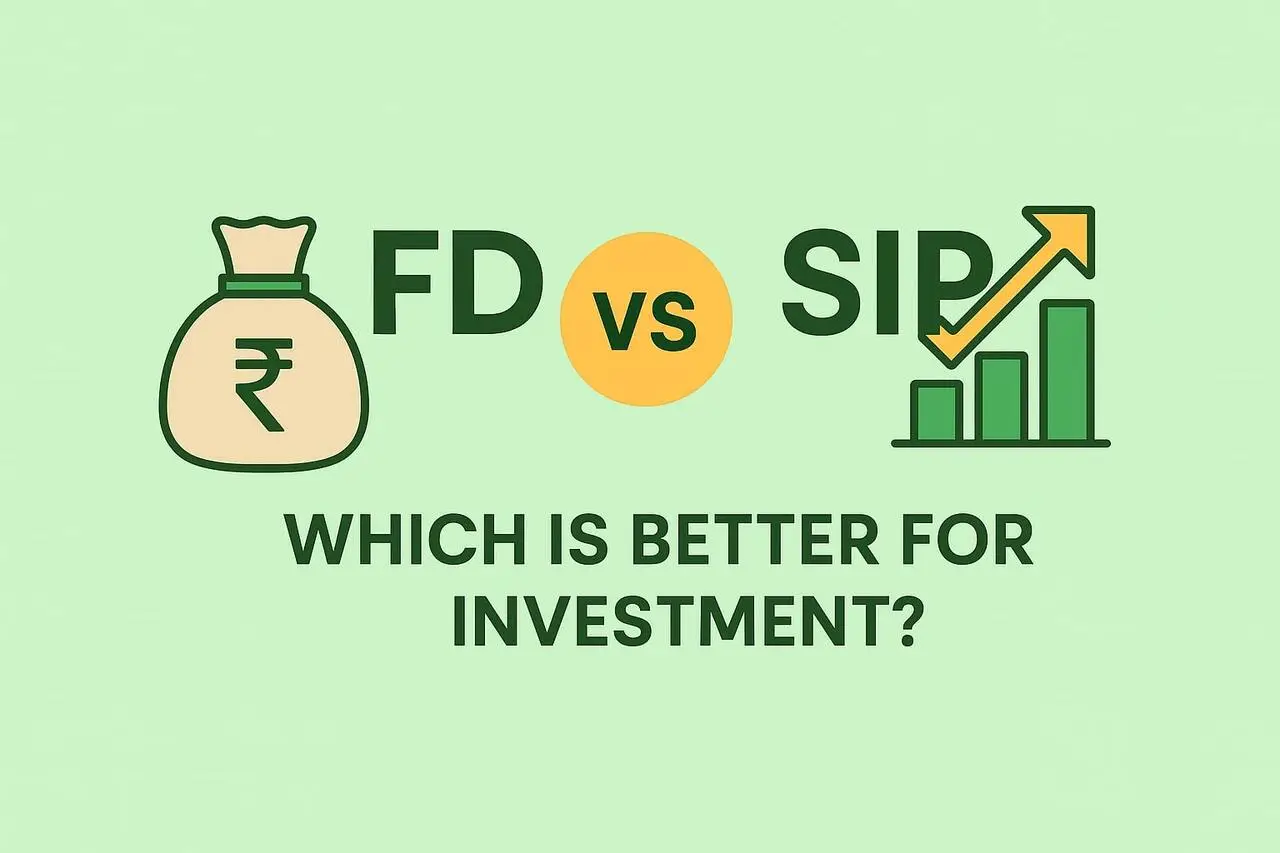Now Reading: SIP vs FD: Which is a Better Starting Point for New Investors in India?
-
01
SIP vs FD: Which is a Better Starting Point for New Investors in India?
SIP vs FD: Which is a Better Starting Point for New Investors in India?

For young Indians beginning their financial journey, choosing between a Systematic Investment Plan (SIP) and a Fixed Deposit (FD) can be confusing. Both are popular and widely trusted, especially in Tier 2 cities like Nagpur, Indore, and Ranchi. While FDs are seen as safe and steady, SIPs offer potentially higher returns. So which one should a beginner choose?
Understanding the Basics
A Fixed Deposit is a traditional saving option where you deposit a lump sum in a bank for a fixed period at a fixed interest rate. It’s predictable and risk-free.
On the other hand, SIPs allow you to invest a fixed amount regularly in mutual funds. It’s market-linked, so returns may fluctuate, but over time, SIPs can offer higher returns than FDs.
Returns: Stability vs. Growth
FDs generally offer 5% to 7% annual interest, which is great for those who don’t want to take risks. But inflation can eat into your real returns.
SIPs, especially in equity mutual funds, may provide 10% to 12% returns annually over the long term. While not guaranteed, the compounding effect over 5–10 years can lead to significant wealth creation.
Risk and Safety
FDs are almost zero-risk. The money is secure and insured up to ₹5 lakh under RBI rules.
SIPs carry market risk, but investing in large-cap or balanced funds can help reduce volatility. For first-timers, starting small and with safer fund options is key.
Liquidity and Lock-in
FDs usually come with lock-in periods—breaking them early attracts a penalty.
SIPs, especially in open-ended mutual funds, allow you to withdraw anytime after the first year. This gives more flexibility to investors who might need funds in emergencies.
Taxation Angle
Interest earned on FDs is fully taxable as per your income slab, making it less efficient for those in higher tax brackets.
SIPs held for over a year enjoy better tax treatment. Long-term capital gains (up to ₹1 lakh) from equity funds are tax-free, making SIPs more tax-friendly in the long run.
Which One Should You Start With?
If you’re risk-averse or saving for a short-term goal (like an exam fee, emergency fund, or travel), an FD is a safe option. It’s simple, and banks in every Indian city—big or small—offer it.
But if you’re planning long-term (5+ years), SIPs can help beat inflation and grow your wealth faster. Even ₹500 a month can make a difference if you stay consistent.
Conclusion
There’s no one-size-fits-all answer. Both SIPs and FDs serve different purposes. The key is to balance your portfolio—use FDs for stability and SIPs for growth. As a beginner in your 20s or early 30s, start small, stay informed, and remember: smart money habits built today will shape your financial future tomorrow.
























